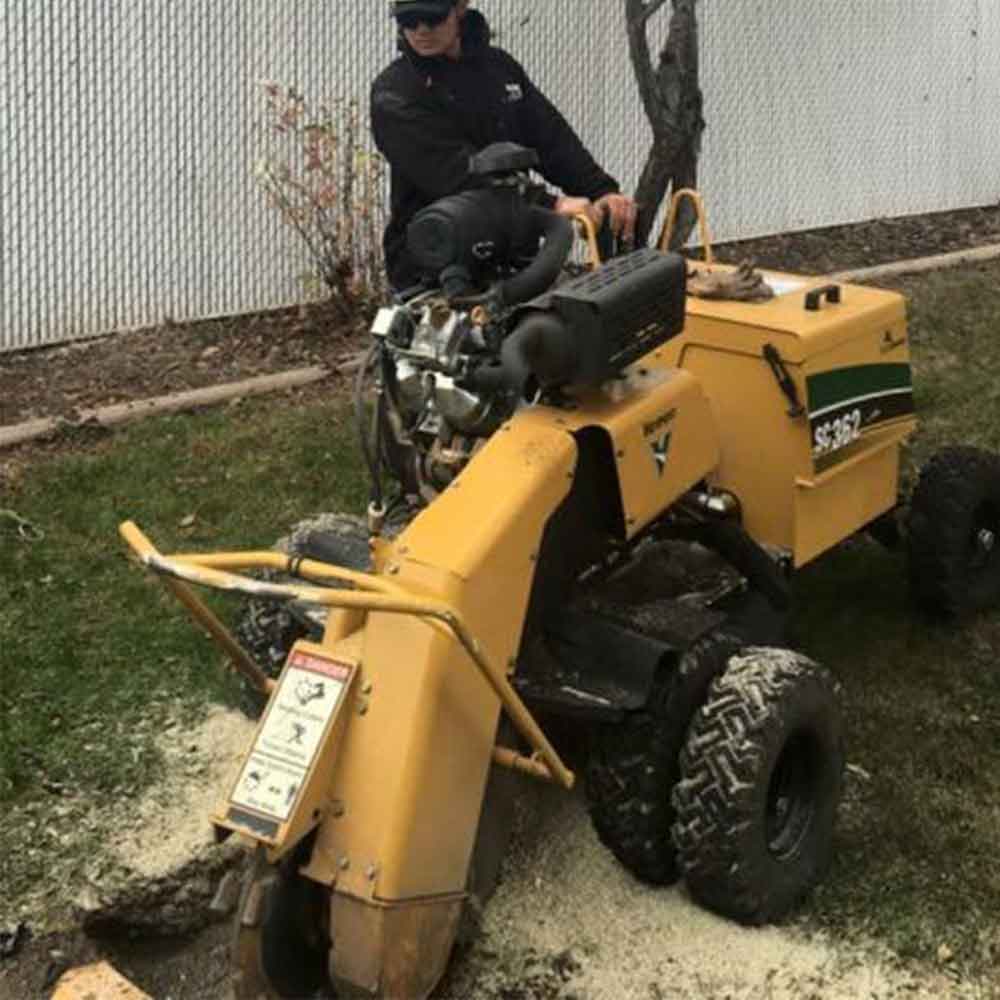No, Salt Lake City will not cut down a tree on your private property for free. The city only removes trees it owns in public spaces like park strips, sidewalks, and parks. Private property trees remain the homeowner’s responsibility in South Salt Lake and surrounding areas.
Tree issues create stress for homeowners who face unexpected removal costs. Diamond Tree Experts understands this challenge and has helped hundreds of local residents navigate tree ownership questions.
This guide explains when the city might help with tree removal, when it’s your responsibility, and what steps to take. You’ll learn exactly who to contact and how to handle tree problems properly.

When Salt Lake City Provides Free Tree Removal
City-Owned Trees
Salt Lake City only removes trees that it owns in public areas. These trees grow in park strips between sidewalks and streets. The city maintains these trees through its Urban Forestry program.
Park strip and sidewalk tree responsibility in Salt Lake City
The city owns and maintains trees in the park strip. This narrow area sits between your sidewalk and the street. The city handles pruning, treatment, and removal of these trees.
Hazardous Public Trees
The city will remove hazardous public trees that pose safety risks. Urban Forestry staff inspect city trees regularly. They look for signs of disease, structural weakness, or damage.
Common hazards that qualify for city removal
Dead branches, split trunks, and leaning trees qualify for city attention. Disease, pest infestation, and storm damage also trigger removal. The city prioritizes trees that threaten people or property.
Emergency response for storm-damaged or fallen trees
The city responds quickly to fallen public trees after storms. Crews clear roads and sidewalks first. They then address trees on private property damaged by public trees.
Exceptions when private trees threaten public safety
The city may intervene if your tree threatens public safety. This happens rarely and only in extreme cases. You might still bear removal costs in these situations.
Trees on Public Land
Salt Lake City handles trees on all public property. This includes parks, government buildings, and public rights-of-way. The city maintains these trees throughout their lifecycle.
City responsibility for fallen park or public land trees
The city removes trees that fall from public land onto private property. They clear the tree and may repair damage to fences or structures. This service applies only to city-owned trees.
When homeowners need insurance for property damage
Your homeowner’s insurance may cover damage from fallen city trees. Document everything with photos before cleanup begins. Contact your insurance company immediately after any incident.
When Tree Removal Is the Homeowner’s Responsibility
Tree on Private Property
Trees on private property are the owner’s responsibility. You must pay for maintenance, pruning, and eventual removal. This applies to all trees within your property boundaries.
Rules for maintenance and liability in Salt Lake City
Homeowners must maintain their trees in safe condition. This includes removing dead branches and treating diseases. Neglecting tree care creates legal liability.
Legal risks of neglecting hazardous private trees
You face liability if your neglected tree damages someone’s property. Courts consider failure to address obvious hazards as negligence. This can result in paying for all damages.
Who pays if your tree damages a neighbor’s property
Your insurance typically covers damage your tree causes to neighbors. This applies even without negligence during storms or accidents. Your rates may increase after such claims.
Shared responsibility for boundary trees
Trees growing on property lines have shared ownership. Both neighbors must agree on major decisions. This includes removal, significant pruning, or treatment options.
Costs of Private Tree Removal
Tree removal costs vary based on size, location, and complexity. Small trees might cost $300-$500. Large trees can exceed $2,000 in Salt Lake City.
Factors that increase or reduce removal expenses
Difficult access, power lines, and buildings increase removal costs. Winter removals often cost less due to slower business. Healthy, accessible trees cost less to remove.
Extra costs for stump grinding and debris hauling
Stump grinding adds $100-$300 to removal costs. Debris hauling might add another $100-$200. These services prevent regrowth and keep your yard clean.
What Homeowners Should Do
Determine Tree Ownership
Check property boundaries to determine tree ownership. The location of the trunk decides who owns the tree. Property surveys provide definitive answers in unclear cases.
Contact Salt Lake City Urban Forestry
Call Urban Forestry at 801-972-7818 for city-owned trees. They evaluate hazardous conditions and schedule necessary work. Remember, they only handle public trees.
Hire a Licensed Tree Service for Private Trees
Professional tree services provide safe, proper removal. They carry insurance and understand local regulations. This protects you from liability and property damage.
Check Your Homeowner’s Insurance Coverage
Review your policy for tree removal coverage. Insurance may cover removal after storms or accidents. Standard policies don’t cover healthy tree removal or maintenance.
Taking Care of Your Trees
Trees add value and beauty to your property. The city helps with public trees, but private trees need your attention.
Diamond Tree Experts provides professional tree removal and tree service throughout South Salt Lake. We handle everything from hazard assessment to complete removal and cleanup.
Contact us today for a free estimate on any tree concerns. We’ll help you determine ownership and provide the right solution for your property.

